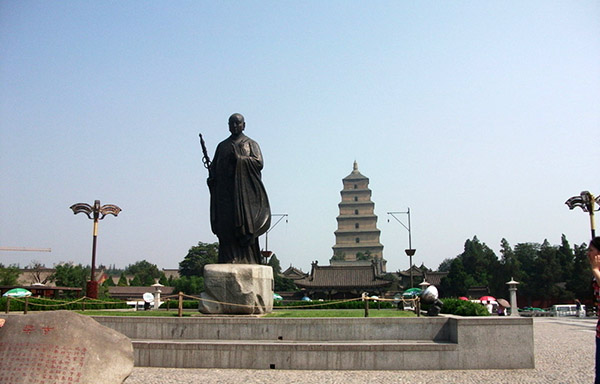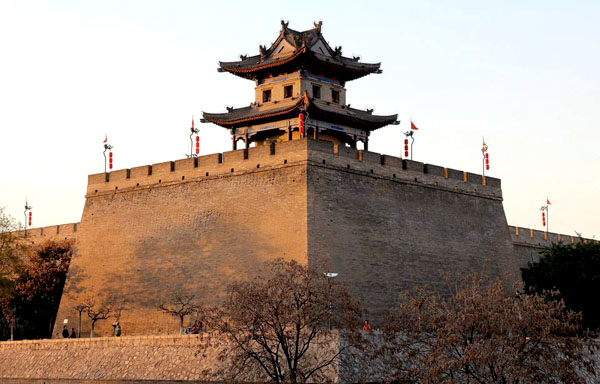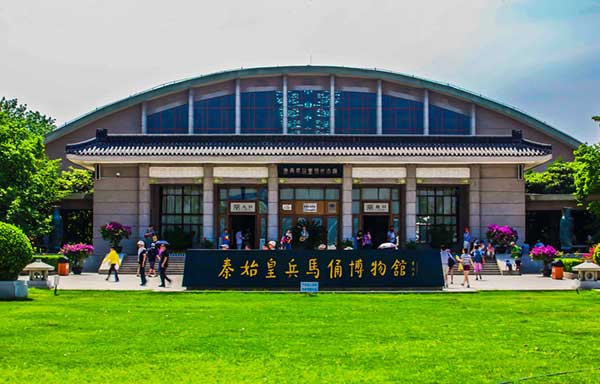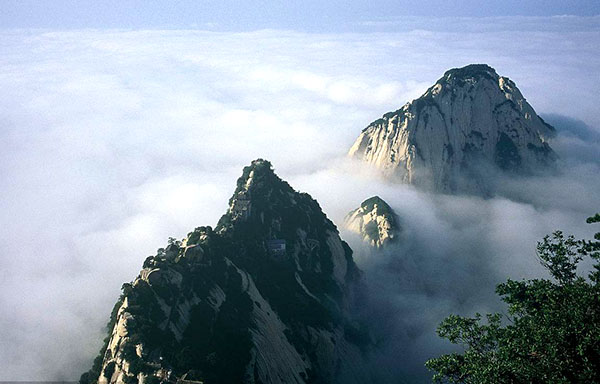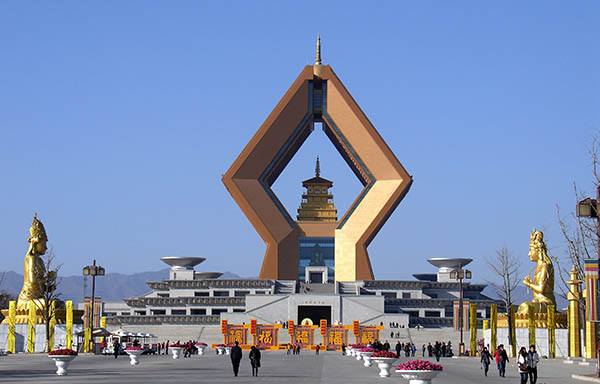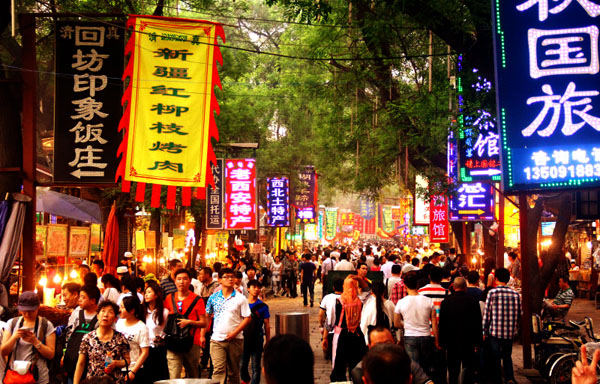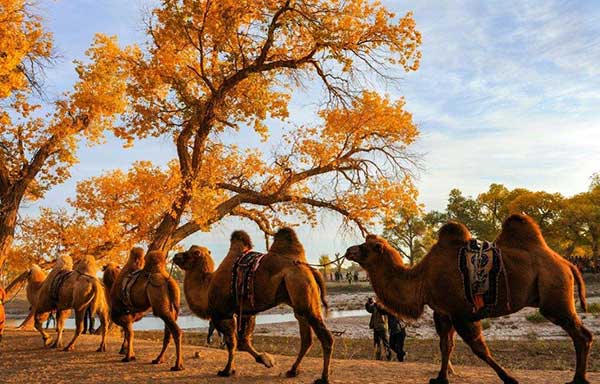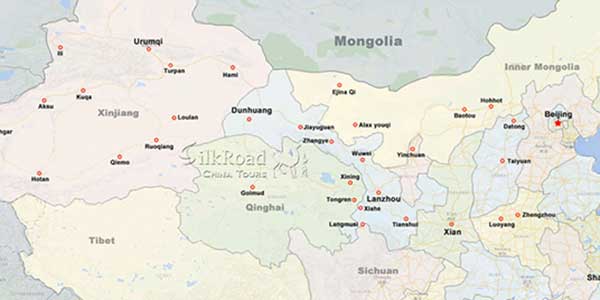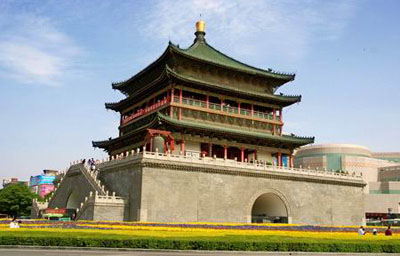 Xi'an is more than 3,000 years old and was known as Chang'an in ancient times. For 1,000 years, the city was the capital for 13 dynasties, and a total of 73 emperors ruled here. Xi'an is the undisputed root of Chinese civilization having served as the capital city for the Zhou, Qin, Han, and Tang dynasties. With so much history within the ground the city lies upon, it is no wonder that there are so many historical ruins, museums and cultural relics to be found here. It was already influencing the world outside of the Great Wall of China as the eastern terminus of the Silk Road(丝绸之路). Here traders from far and wide brought goods and ideas for sale and took goods and ideas back with them to their native countries. In present day Xi'an not much of its former glory remains within the city confines, due to the constant warfare and political changes that swept China particularly throughout the 20th Century. Today the city has a pleasant cosmopolitan flair to it and it is worth visiting for the famed Terracotta Warriors alone. It has often been said that, "if you have not been to Xi'an, you have not been to China!"
Xi'an is more than 3,000 years old and was known as Chang'an in ancient times. For 1,000 years, the city was the capital for 13 dynasties, and a total of 73 emperors ruled here. Xi'an is the undisputed root of Chinese civilization having served as the capital city for the Zhou, Qin, Han, and Tang dynasties. With so much history within the ground the city lies upon, it is no wonder that there are so many historical ruins, museums and cultural relics to be found here. It was already influencing the world outside of the Great Wall of China as the eastern terminus of the Silk Road(丝绸之路). Here traders from far and wide brought goods and ideas for sale and took goods and ideas back with them to their native countries. In present day Xi'an not much of its former glory remains within the city confines, due to the constant warfare and political changes that swept China particularly throughout the 20th Century. Today the city has a pleasant cosmopolitan flair to it and it is worth visiting for the famed Terracotta Warriors alone. It has often been said that, "if you have not been to Xi'an, you have not been to China!"
Xi'an became a cultural and political centre of China in the 11th century BCE with the founding of the Zhou dynasty. The capital of Zhou was established in the twin settlements of Fengjing (丰京) and Haojing, together known as Fenghao, located southwest of contemporary Xi'an. The settlement was also known as Zhōngzhōu to indicate its role as the capital of the vassal states. In 770 BC, the capital was moved to Luoyang due to political unrest. Following the Warring States period, China was unified under the Qin dynasty (221–206 BCE) for the first time, with the capital located at Xianyang, just northwest of modern Xi'an. The first emperor of China, Qin Shi Huang ordered the construction of the Terracotta Army and his mausoleum just to the east of Xi'an almost immediately after his ascension to the throne.
In 202 BCE, the founding emperor Liu Bang of the Han dynasty established his capital in Chang'an County; his first palace, Changle Palace (長樂宮, perpetual happiness) was built across the river from the ruin of the Qin capital. This is traditionally regarded as the founding date of Chang'an, or Xi'an. Two years later, Liu Bang built Weiyang Palace (未央宮, (perpetual happiness) hasn't reached its midpoint yet) north of modern Xi'an. Weiyang Palace was the largest palace ever built on Earth, covering 4.8 km² (1,200 acres), which is 6.7 times the size of the current Forbidden City, or 11 times the size of the Vatican City.[22] The original Xi'an city wall was started in 194 BCE and took 4 years to finish. Upon completion, the wall measured 25.7 km (15.97 mi) in length and 12 to 16 m (39.37–52.49 ft) in thickness at the base, enclosing an area of 36 km2 (13.90 sq mi). In the year 190, amidst uprisings and rebellions just prior to the Three Kingdoms Period, a powerful warlord named Dong Zhuo moved the court from Luoyang to Chang'an in a bid to avoid a coalition of other powerful warlords against him.
Following several hundred years of unrest, the Sui dynasty united China again in 582. The emperor of Sui ordered a new capital to be built southeast of the Han capital, called Daxing (大興, great prosperity). It consisted of three sections: the Imperial City, the palace section, and the civilian section, with a total area of 84 km2 (32 sq mi) within the city walls. At the time, it was the largest city in the world. The city was renamed Chang'an (長安, Perpetual Peace or Eternal Peace) by the Tang Dynasty. In the mid-7th century, after returning from his pilgrimage to India, Buddhist monk Xuanzang (popularly known as Tang Sanzang) established a translation centre for Sanskrit scriptures.
Construction of the Great Wild Goose Pagoda began in 652. This pagoda was 64 m (209.97 ft) in height, and was built to store the translations of Buddhist sutras obtained from India by Xuanzang. In 707, construction of the Small Wild Goose Pagoda began. This pagoda measured 45 m (147.64 ft) tall at the time of completion, and was built to store the translations of Buddhist sutras by Yijing. The massive 1556 Shaanxi earthquake eventually damaged the tower and reduced its height to 43.4 m (142.39 ft).
Chang'an was devastated at the end of the Tang dynasty in 904. Residents were forced to move to the new capital city in Luoyang. Only a small area in the city continued to be occupied thereafter. During the Ming dynasty, a new wall was constructed in 1370 and remains intact to this day. The wall measures 11.9 km (7.4 mi) in circumference, 12 m (39.37 ft) in height, and 15 to 18 m (49.21–59.06 ft) in thickness at the base; a moat was also built outside the walls. The new wall and moat would protect a much smaller city of 12 km2 (4.6 sq mi).
In October 1911, during the revolution in which the Qing dynasty was overthrown, the Manchus living in the northeastern zone within the city walls were massacred. In 1936, the Xi'an Incident took place inside the city during the Chinese Civil War. The incident brought the Kuomintang (KMT) and Communist Party of China to a truce in order to concentrate on fighting against the Japanese Invasion. On May 20, 1949, The Communist-controlled People's Liberation Army captured the city of Xi'an from the Kuomintang force.
Xi'an lies on the Guanzhong Plain in the south-central part of Shaanxi province, on a flood plain created by the eight surrounding rivers and streams. The city has an average elevation of 400 metres (1,312 ft) above sea level and an annual precipitation of 553 mm (21.8 in). The urban area of Xi'an is located at 34°16′N 108°56′E. The Wei River provides potable water to the city.
The city borders the northern foot of the Qin Mountains (Qinling) to the south, and the banks of the Wei River to the north. Hua Shan, one of the five sacred Taoist mountains, is located 100 km (62 mi) away to the east of the city. Not far to the north is the Loess Plateau.
At the beginning of Han dynasty, Prime Minister Zhang Liang advised the emperor Liu Bang to choose Guanzhong as the capital of the Han dynasty: 'Guanzhong Plain, which is located behind Xiao Pass and Hangu Pass, connects Long (Gansu) and Shu (Sichuan). Land of thousands miles and rich in harvest can be found here, as if this place is belongs to the nation of the heaven.' (《关中左崤函,右陇蜀,沃野千里,此所谓金城千里,天府之国也》) Since then, Guanzhong is also known as the 'Nation of the Heaven'.
Weather
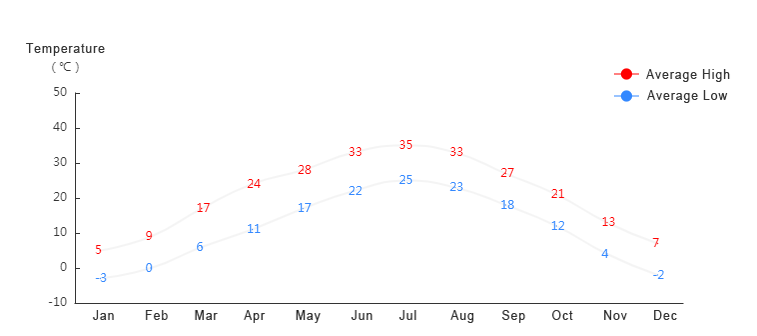
Attractions in Xi'an
Related Tours
General Information
Alias: Changan
Area: 10,108 sq km
Location: Shaanxi
Airport: 50 km from city
Train Station: In the city
Population: 8,467,800
Relevant blogs
-
How did the name of Tianshui in Gansu come about?
The name Tianshui is very pleasant to the ear, and it reminds one of that exquisitely beautiful verse, "After getting drunk, one doesn't know if the sky is in
-
The 8th Silk Road Hotel Festival was successfully
On December 27th, the "8th Silk Road Hotel Festival" grandly opened at the Yujing International Hotel in Zhangye. This hotel festival gathered industry experts,
-
The Karez Irrigation System in Turpan has been sel
On September 3rd, at the 75th Executive Council Meeting of the International Commission on Irrigation and Drainage held in Sydney, Australia, the 2024 (11th bat
-
What is the connection between "dragons" and "s
In traditional Chinese culture, the snake has a dual identity of auspiciousness and danger. Ancient people believed that the snake not only possesses divine cha
-
Endangered Przewalski's Horses Spotted at Dunhuan
<p>In early February, a group of special "visitors"—the Przewalski's horses—appeared at the Dunhuang Yumen Pass scenic area in Gansu Province, a U
-
The Fourth Dunhuang Cultural Tourism Supplier Conf
On the morning of February 18th, the Fourth Dunhuang Cultural Tourism Supplier Conference in Northwest China commenced at the Dunhuang International Convention

